Pritzker Prize won by Japanese architect Shigeru Ban
- Published
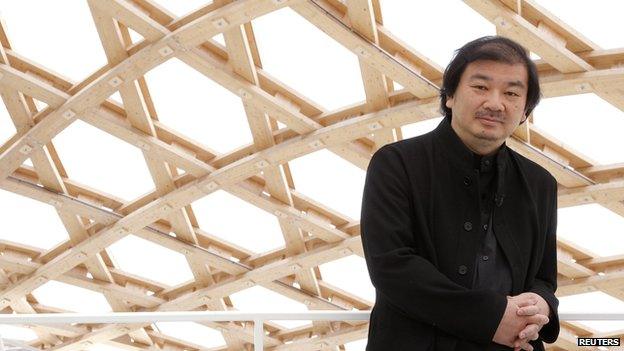
Ban inside the roof of the Centre Pompidou-Metz museum he designed in France, inspired by a Chinese hat
Japanese architect Shigeru Ban - who uses cardboard tubes to make temporary housing in disaster zones - has won 2014's Pritzker Architecture Prize.
The 56-year-old architect has designed a range of buildings to help victims of natural disasters and refugees.
Ban, whose work also includes a paper cathedral in Christchurch, New Zealand, said it was "a great honour" to win the Pritzker, architecture's top prize.
His "commitment to humanitarian causes" is "an example for all", said judges.
"Innovation is not limited by building type and compassion is not limited by budget. Shigeru has made our world a better place," said Tom Pritzker, head of The Hyatt Foundation which awards the prize.
Ban has spent two decades travelling the world to help design "low-cost but dignified housing" for people in disaster zones, including Japan, Rwanda, India, Sri Lanka, Haiti, Italy and is currently in the Philippines.
However the architect said he "must be careful" with the honour, which he felt had come "too early", adding: "I haven't achieved enough".
"I see this prize as encouragement for me to keep doing what I am doing - not to change what I am doing, but to grow," said Ban.
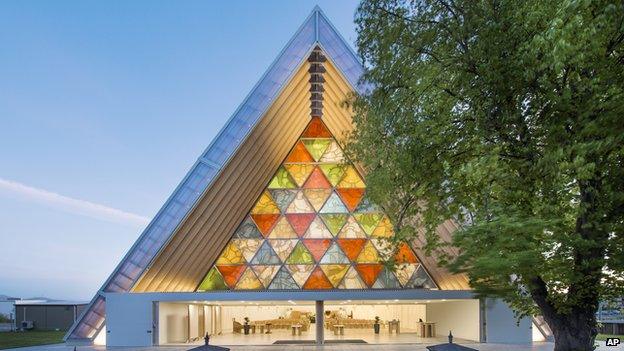
Shigeru Ban built this cardboard cathedral in Christchurch, New Zealand after the earthquake there
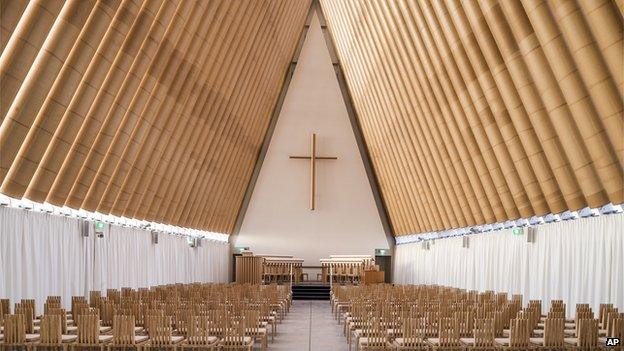
The architect often works using recyclable materials
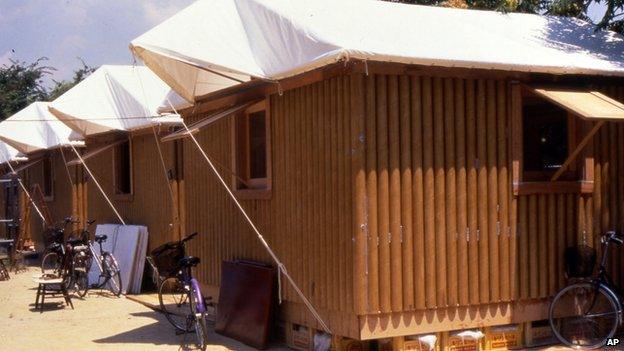
This row of paper log houses in Kobe, Japan, is an example of Ban's temporary accommodation
Ban added: "I must continue to listen to the people I work for, in my private residential commissions and in my disaster relief work."
The architect often works using recyclable materials such as locally-sourced cardboard tubes for columns, walls and beams, which are easy to put up and take down and can also be made flame-resistant and waterproof.
His humanitarian work began in 1994, in response to the Rwandan genocide that displaced millions. The UN hired him as a consultant after he proposed building paper-tube shelters for refugees in the central African country.
In the wake of the 2009 earthquake in L'Aquila, Italy, he created a temporary auditorium so the city's musicians could continue to play; and he used paper columns to build temporary classrooms for children affected by 2008's Sichuan earthquake.
While dealing with the aftermath of Japan's earthquake and tsunami in 2011, Ban created partitions to help families keep their privacy in makeshift shelters like gymnasiums, before building a three-story temporary shelter to house 19 families in the grounds of a baseball stadium.
"This is my life's work," said Ban in an interview earlier this week.
"After I became an architect I was very disappointed in our profession. Because we are mostly always working for privileged people, with power and money," he explained.
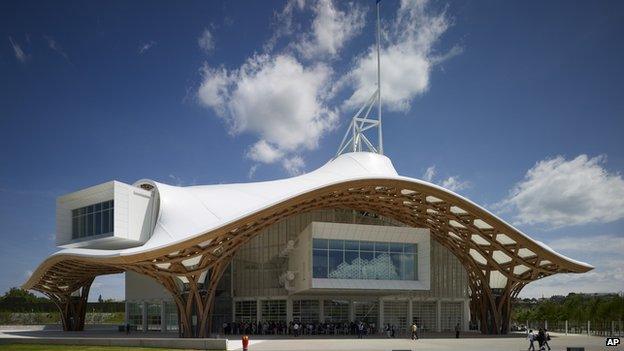
The Centre Pompidou-Metz designed by Ban houses a collection of contemporary art in Metz, France
"So I thought that architects needed to have more of a social role. I thought we could use our experience and our knowledge for people who need help in a natural or man-made disaster.
"Even something like temporary housing, we can make more comfortable and more beautiful," he added.
Outside Ban's humanitarian work, his projects include the Centre Pompidou-Metz, a modern art museum in France featuring a curved roof made of timber which is inspired by a Chinese hat.
He also designed Swiss media firm Tamedia's seven-storey headquarters, built with an interlocking wooden frame that has no metal joints; and the Metal Shutter Houses in New York, which feature a unique metal shutter system to open them up to the city air.
The architect - who has offices in Tokyo, Paris and New York - was born in Tokyo to a Toyota employee father and a mother who was a haute couture designer.
He attended the Southern California Institute of Architecture, and earned his degree in architecture from Cooper Union in New York City in 1984.
He now teaches at architecture schools around the world and is a professor at Kyoto University of Art and Design.
The prestigious prize comes with a $100,000 (£60,500) grant and will be presented at a formal awards ceremony in Amsterdam in June.
It is the second year in a row that a Japanese architect has won, after last year's prize was given to Toyo Ito.
- Published15 August 2013
- Published27 December 2012
- Published18 March 2013